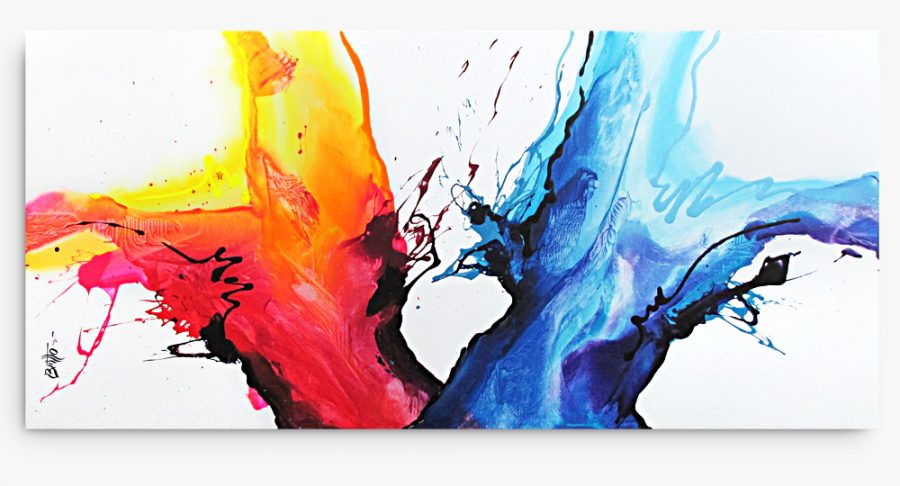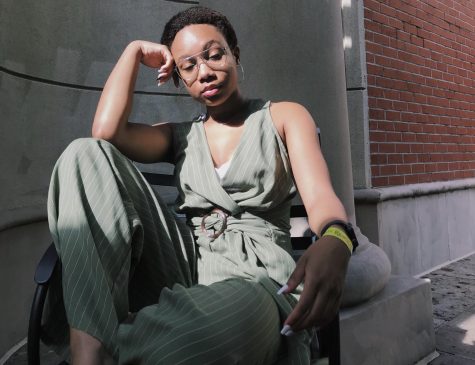The Benefits of Art
Such an underrated form of expression, don’t you think?
February 21, 2019
Canvas. Sketch. Paint. Art.
Camera. Environment. Image. Art.
Passion. Microphone. Melody. Art.
Many people believe you need to be a Picasso, a Whitney Houston, or a Mark Twain to be considered an artist. Untrue. Everyone is born with a desire to express themselves, to let emotions that can’t be spoken out loud run free and be seen in some way.
As bebrainfit.com* states, “Art encompasses a wider range of activities than you might imagine.” Here are some of the best ways, according to them, how art can benefit your mental health:
Relieving Stress
According to Cleveland Clinic, the average person has 60,000 thoughts per day—and 95% of them are the same as the day before. Activities such as sculpting, painting, photography, and drawing can help lower your stress level and work as a form of meditation.
Leonardo da Vinci proclaimed that “Painting embraces all the ten functions of the eye; that is to say, darkness, light, body and color, shape and location, distance and closeness, motion and rest.”
It allows you to observe the little things, instead of the blaring, distracting hustle and bustle of life nowadays.
Encouraging Creative Thinking
Dr. Lawrence Katz, famed pioneer in neuron regeneration research and author of “Keep Your Brain Alive: 83 Neurobic Exercises to Help Prevent Memory Loss and Increase Mental Fitness”, found that reduction of mental health stemmed from a loss of communication between brain cells—not exactly from the death of said cells.
The concept of left-brain right-brain dominance is a theory that has been disproven; both hemispheres of your brain need to communicate with each other. In easier words, your brain needs to exercise in ways that enhance the senses, promoting analytical and creative development, and art does exactly that.
Art encourages creative thinking, allowing you to take a break from the world of equations, science, and set answers. There is no right or wrong in art, it is simply what you make it.
Art Boosts Self-Esteem, Provides a Sense of Accomplishment
The same way a kid loves when their parent sticks their art on the fridge, getting to hang your own art up on the wall instills a satisfying feeling of self-confidence and accomplishment. Creating art increases the feel-good neurotransmitter dopamine, also known as the “motivation molecule”.
According to the website bebrainfit.com dopamine increases drive, focus, and concentration, enabling you to plan ahead and resist distractions to make it easier to reach your goals. It stimulates the neurons and prepares your brain for learning.
You don’t have to paint a masterpiece or write an opera to receive the benefits of creating. Dopamine is increased through all types of crafting: knitting, sewing, gardening, DIYs. Such crafts also ward off depression and are anti-aging.
Art Makes Children Better Students for Life
It’s long been suspected that music and arts programs make better students; now, with neuroimaging, science can back this up.
Children with musical training perform better in math, language, and reading. Introduction to music early helps increase blood flow to the brain, and intensifies plasticity. There’s evidence that these benefits can follow through to adulthood, lasting a lifetime.
The benefits of visual arts are equally impressive: boosted IQ, attention span, intelligence, and brain plasticity. They improve overall behavior and reduce impulsiveness. (.)
Viewing Art Increases Tolerance, Empathy, and Feelings of Love
A study reported on www.bebrainfit.com of over 10,000 students proved that an hour-trip to an art museum changed their mood and thought-process.
These students not only showed increased critical thinking skills, but also an increased amount of empathy and acceptance toward people different from themselves.
According to Professor Semir Zeki, a neurobiologist at the University College London, just viewing art gives pleasure, similar to falling in love. The act triggers a surge of dopamine in the same area where the brain registers romantic love.
Creating Art vs. Art Therapy
What happens when art isn’t enough? Sometimes our minds just can’t help but be a certain type of way, and professional help is needed.
Art therapists are health care professionals with backgrounds in both art and psychology or counseling, usually with a master’s degree. They must complete 1,000 supervised hours working with clients.
You should consider art therapy if you are experiencing any of these situations: (.)
- high-stress occupation
- mental health disorder
- learning disability
- brain injury
- chronic illness
It’s also recommended for children or teens who are having personal problems or issues in school.
According to information from www.bebrainfit.com art used as therapy has successfully helped people with anxiety, depression, addictions, PTSD, chronic pain, cancer, high blood pressure, bipolar disorder, dementia and Alzheimer’s, and other serious physical and mental health conditions.
If you’re interested in art therapy, you can find a therapist close to you using Psychology Today’s search tool.
Don’t be intimidated by the thought of doing art; it’s the process of creating that provides the benefits, not the quality of the results!




